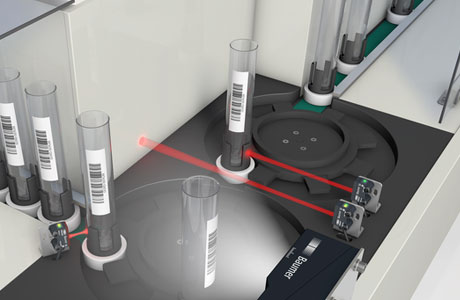Key Takeaway
Photoelectric sensors detect objects by emitting and receiving light, usually for detecting presence or measuring distance. They work well in industrial settings for object detection and automation tasks.
On the other hand, optical sensors convert light into electrical signals and are often used for measuring light intensity, color detection, or in more precise applications like fiber optics. The key difference is that photoelectric sensors are more specialized for detecting objects, while optical sensors focus on light measurement.
Defining Photoelectric Sensors: Key Characteristics and Functions
Photoelectric sensors are widely used in various industrial applications because of their precision and flexibility. These sensors operate by detecting objects, changes in surface conditions, or distances through light. A light source, usually infrared, is emitted and then detected by a receiver. The sensor determines the presence or absence of an object based on whether the light is reflected back or interrupted.
One key characteristic of photoelectric sensors is their ability to work at a distance. You can use them to detect objects from as close as a few millimeters to as far as several meters. Their functionality extends across three main types: through-beam, retroreflective, and diffuse sensors. Each type has its unique application depending on the industrial requirement.

What Are Optical Sensors and How Do They Work?
Optical sensors are devices that use light to measure specific changes in an environment. These sensors are designed to detect variations in light properties, such as intensity, wavelength, and polarization, making them ideal for applications requiring precision. Unlike photoelectric sensors that focus on the presence or absence of an object, optical sensors provide more detailed data. This level of sensitivity allows them to be used in operations where subtle light changes, like color or brightness, are critical.
In industrial settings, optical sensors are often employed for tasks like quality control, detecting surface defects, or ensuring the correct color in products. For example, in a pharmaceutical production line, optical sensors might be used to ensure that the color of a pill matches the required specifications. Their precision makes them suitable for industries where the tiniest variations can make a huge difference in the final product.
Key Differences in Technology: Photoelectric vs. Optical Sensors
While both photoelectric and optical sensors rely on light for detection, the technologies differ significantly. Photoelectric sensors are simple, robust, and cost-effective for detecting the presence of objects. They work by transmitting light and measuring the interruption caused by an object. This makes them perfect for tasks like object counting or detecting items on a conveyor belt.
On the other hand, optical sensors are more advanced, capable of analyzing changes in light conditions. They can monitor shifts in intensity or wavelength, making them suitable for light-sensitive tasks. For instance, optical sensors would be the ideal choice for monitoring glass surfaces for scratches, as they can detect minor imperfections that a photoelectric sensor might miss. The biggest difference: photoelectric sensors excel at object detection, while optical sensors focus on light analysis.
Comparing Applications of Photoelectric and Optical Sensors
In industrial applications, photoelectric sensors shine in scenarios where reliable object detection is essential. Think of an automated production line where products need to be counted or sorted based on their presence or absence. Photoelectric sensors are highly reliable in detecting objects from long distances, making them perfect for larger operations like warehouse automation or assembly lines.
The durability and simplicity of these sensors make them ideal for industries that need cost-effective, large-scale object detection. For instance, in a packaging line, photoelectric sensors can easily detect whether a box is in place, ensuring the automation process runs smoothly. They’re robust enough to handle the repetitive nature of such operations while maintaining accuracy.
Photoelectric vs. Optical Sensors H2: Comparing Applications of Photoelectric and Optical Sensors H2: When to Choose Photoelectric Sensors vs. Optical Sensors in Industrial Applications
Optical sensors are the go-to choice when precision is key, particularly in industries where light changes need to be closely monitored. Take, for example, quality control processes in high-end manufacturing. These sensors can detect tiny shifts in light, whether it’s a change in color or intensity. This is especially useful in industries like electronics, where precise color matching or surface inspection is crucial.
In a practical setting, an optical sensor can help identify minor defects in transparent materials, such as glass or plastic, by detecting how light interacts with the material. While they may be more expensive than photoelectric sensors, the value they provide in light-sensitive tasks is unmatched. They allow manufacturers to maintain high standards of product quality by catching defects early in the production process.
Conclusion
In summary, while both photoelectric and optical sensors utilize light for detection, they cater to different industrial needs. Photoelectric sensors excel in object detection where durability and range are essential, while optical sensors are favored for precision and sensitivity. Understanding the unique strengths of each sensor type is crucial for making informed decisions in projects, ensuring efficiency and safety in industrial applications. When selecting the right sensor, consider whether your application requires robust object detection or precise light analysis—this distinction will guide your choice.
